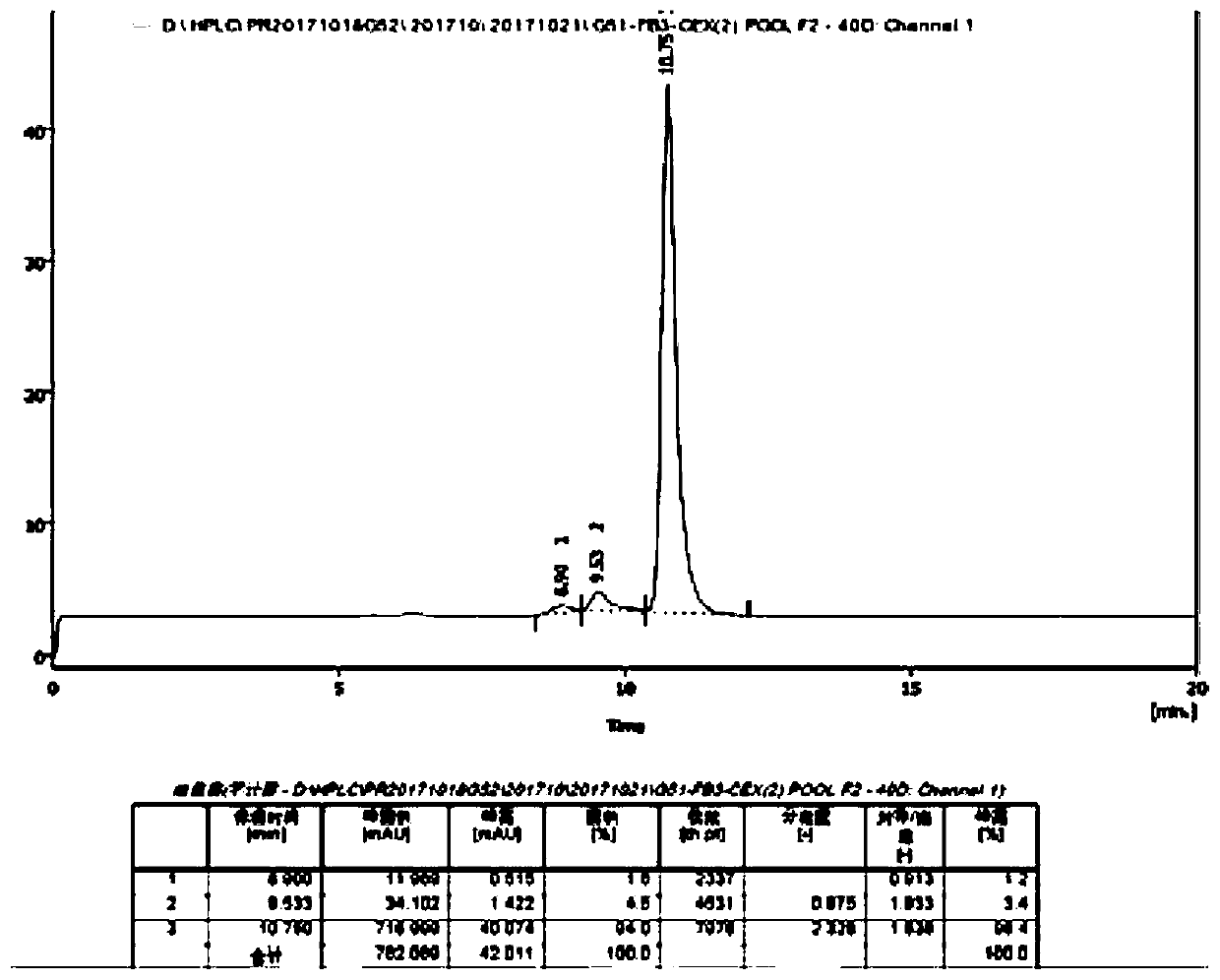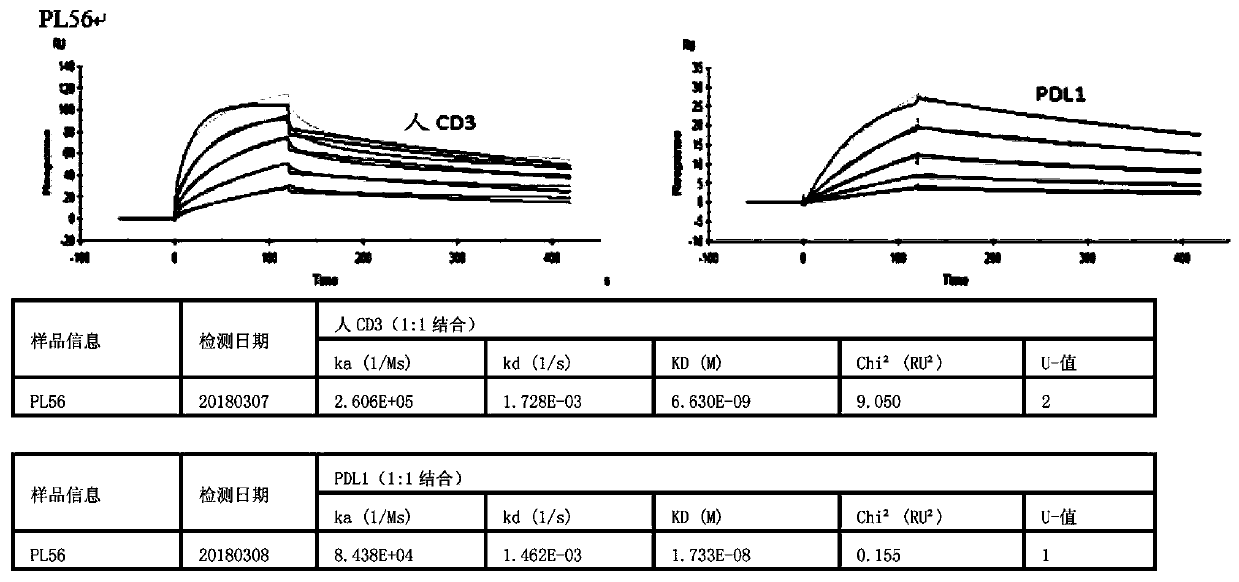Bispecific antibody
A bispecific antibody and bispecific antibody technology, applied in the direction of antibodies, specific peptides, anti-tumor drugs, etc., can solve problems such as tumor immune escape
- Summary
- Abstract
- Description
- Claims
- Application Information
AI Technical Summary
Problems solved by technology
Method used
Image
Examples
Embodiment 1
[0059] Expression and purification of bispecific antibodies
[0060] (1) Synthesize the nucleotide sequence shown in SEQ ID NO: 10 and determine the correctness of the sequence. (2) Cloning the synthesized sequence into a mammalian expression vector in a manner well known to those skilled in the art. (3) Transfect the expression vector into the host cell CHO cell, and culture it for a suitable time. (4) After the set culture time, harvest the cell culture supernatant. (5) Purify the bispecific antibody by affinity chromatography with Ni strain. (6) Further purifying the bispecific antibody with anions and cations. (7) Determine the purity, concentration and charge heterogeneity of the bispecific antibody after purification by SDS-PAGE, SEC, iCE and other methods.
Embodiment 2
[0062] Using SPR to detect the affinity of bispecific antibodies to CD3 and PD-L1 proteins
[0063] (1) Prepare or purchase PD-L1 protein and CD3 protein. (2) Fix the PD-L1 or CD3 protein on the chip according to the instructions of the SPR manufacturer. (3) Prepare 4 to 5 different concentrations of the purified bispecific antibody solution. (4) Flow the bispecific antibody solution at a suitable speed through the chip immobilized with PD-L1 or CD3 protein and record the SPR reading. Calculate the affinity of the bispecific antibody to PD-L1 and CD3 proteins based on the reading and concentration.
Embodiment 3
[0065] Affinity determination of bispecific antibodies to cells expressing CD3 and PD-L1
[0066] (1) Preparation and culture of CD3-expressing cells, such as cytokine-induced human T cells or CHO cells expressing human PD-L1; (2) The purified bispecific antibodies of different concentrations are combined with a certain amount of CD3-positive cells or PD-L1 positive CHO cells are co-cultured; (3) Add fluorescently labeled anti-His-Tag antibody and culture; (4) Wash off antibodies and secondary antibodies that are not bound to the cells; (5) Use flow cytometry to determine The amount of the bispecific antibody bound to the cell surface; (5) Calculate the affinity of the bispecific antibody to CD3 positive cells and PD-L1 positive cells.
PUM
 Login to View More
Login to View More Abstract
Description
Claims
Application Information
 Login to View More
Login to View More - R&D
- Intellectual Property
- Life Sciences
- Materials
- Tech Scout
- Unparalleled Data Quality
- Higher Quality Content
- 60% Fewer Hallucinations
Browse by: Latest US Patents, China's latest patents, Technical Efficacy Thesaurus, Application Domain, Technology Topic, Popular Technical Reports.
© 2025 PatSnap. All rights reserved.Legal|Privacy policy|Modern Slavery Act Transparency Statement|Sitemap|About US| Contact US: help@patsnap.com



